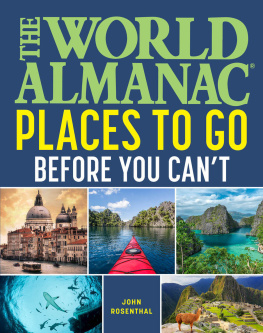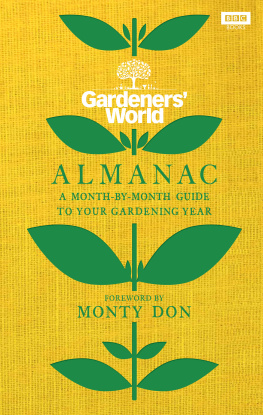

Copyright 2023 by Skyhorse Publishing, Inc.
All rights reserved. No part of this book may be reproduced in any manner without the express written consent of the publisher, except in the case of brief excerpts in critical reviews or articles. All inquiries should be addressed to World Almanac, 307 West 36th Street, 11th Floor, New York, NY 10018.
World Almanac books may be purchased in bulk at special discounts for sales promotion, corporate gifts, fund-raising, or educational purposes. Special editions can also be created to specifications. For details, contact the Special Sales Department, 307 West 36th Street, 11th Floor, New York, NY 10018 or .
Published by World Almanac, an imprint of Skyhorse Publishing, Inc., 307 West 36th Street, 11th Floor, New York, NY 10018.
The World Almanac is a trademark of Skyhorse Publishing, Inc. All rights reserved.
www.skyhorsepublishing.com
10 9 8 7 6 5 4 3 2 1
Text by John Rosenthal
Photos by Getty Images and Shutterstock, except page 254, The Muraka, Conrad Maldives Rangali Island
Interior design by Chris Schultz
Cover design by David Ter-Avanesyan
Cover images by Getty Images and Shutterstock
Library of Congress Cataloging-in-Publication Data is available on file.
Print ISBN: 978-1-5107-7382-0
Ebook ISBN: 978-1-5107-7383-7
Printed in China
Contents
Introduction
What an incredible time it is to be a traveler. Never in the history of humankind has it been possible to visit so many corners of the earth. From the far northern reaches of Canada to the most remote islands in Micronesia, theres not a spot on the planet that cant be reached by a determined visitor.
Stop for a moment to consider that fact in its historic context. When the ancient Greeks first enumerated their seven wonders of the ancient world in the first century BCE, the world as they knew it consisted only of the Mediterranean and the Middle East, and five of the seven landmarks celebrated Hellenic achievements in construction.
Two centuries later, the world is so much wider and so much more wonderful. But even though six of the seven ancient wonders were destroyed by fire, war, or earthquakes by 1303 CE, the Greeks list continues to capture western imaginations. In the seven centuries since a massive tremor laid the Lighthouse of Alexandria to ruins, some world traveler may have updated the list to include the Great Wall of China, the Taj Mahal, or Machu Picchu, to name just a few. But if so, that roster hasnt survived. Its only in the past 30 years that organizations ranging from the American Society of Civil Engineers to USA Today to Astronomy magazine have started to rethink what constitutes a wonderand also what constitutes the world, now that humans have circumnavigated the globe, plumbed the depths of the oceans, and voyaged to the farthest reaches of space. Meanwhile, a Swiss corporation calling itself the New7WondersFoundation set up a website in 2001 encouraging voters to choose not only a septet of the worlds most monumental monuments, but also the seven most awe-inspiring natural wonders and the seven most spectacular cities.
But why stop at seven? That averages out to just one wonder per continent. Why not 17, 70, 700, or 7,000? International travel is cheaper, faster, and more accessible than ever, and people have more disposable income and leisure time than they did at any time in history. Moreover, as our life spans increase, so too should our bucket lists. In 1940, the average 65-year-old man could expect to live another 12 years, while the typical woman could anticipate 13 golden years; by 2022, those numbers had increased to 19 and 21. Thats another seven-plus years to see the world.
The list of destinations in this book is by no means comprehensive. Notably absent are indisputable wonders like the Colosseum or Chichn Itz. Instead, the focus is on places that are at risk of changing irrevocably, or even disappearing altogether. Sadly, the most imminent threat to so many of the selections is climate change. Rising seas, higher temperatures, rampant wildfires, and floods have already taken aim at some of the worlds most beloved places, as well as the animals that call them home.
But other factors are at work too. Pompeii and the Taj Mahal, for example, are suffering from neglect. Logging, mining, and oil and gas exploration activities threaten natural treasures from Alaska to Zambia. Armed conflict in central Africa puts endangered mountain gorillas in the crosshairs. Burrowing moles could topple Stonehenge (seriously!). Skyscrapers might soon dwarf the historic architecture in the center of Vienna. Poachers, not pollution, are the greatest threats to Indonesias endangered Komodo dragons. Route 66 is being erased faster than the Berlin Wall.
Not all impending changes are for the worse, however. After a devastating fire in 2019, Pariss Notre-Dame cathedral is rising from the ashes. In Barcelona, Antoni Gauds Sagrada Famlia nears completion, more than 140 years after its cornerstone was first laid. Vietnam, formerly one of the worlds poorest countries, is urbanizing at an unprecedented rate. Lava reshapes the contours of Hawaiis Volcanoes National Park every day. And if youve got a quarter of a million bucks, its now possible to dive down to the bottom of the Atlantic where you can see the wreck of the RMS Titanic.
So what are you waiting for? Get out there and see the worldbefore you cant.
John Rosenthal
NORTH AMERICA

Big Sur
Drive one of the worlds prettiest coastlines.

Plan Your Trip
Location: Central California coast, between Monterey and Cambria
Getting There: The closest major airports are San Jose International, about two hours north of Big Sur, or San Francisco International, another hour farther north.
When to Go: In general, the dry season between April and October sees the most visitors and the most expensive hotel rates. But the weather on the Central Coast is fickle. Like San Francisco, Big Sur can be shrouded by fog even on the hottest days of summer, or brilliantly sunny in the depths of the rainy season between November-March. The fog oftenbut not alwayslifts by midday.
Theres something magical about places where the mountains meet the sea. On islands like Oahu, Majorca, Moorea, and St. Lucia or knife-edges-of-the-continent like Acadia National Park, Italys Amalfi Coast, and Australias Great Ocean Road, the abrupt transition from land to water creates dramatic, rugged terrain.
Perhaps the most breathtaking such intersection is Big Sur, on Californias central coast. Pacific Coast Highway (PCH) is the only road in and out of this gorgeous landscape, but the drive is so replete with outstanding vistas that you wouldnt want to take any other route.
Unless youre in a hurry, that is. This is definitely a scenic route, following the contours of the coast, twisting and turning sharply to reveal unexpected views in all directions. The best views of Big Surs majesty, of course, are the ones without a windshield. Stop at Andrew Molera State Park to hike through groves of towering redwoods, surf the clearbut chillyocean break, or learn about the Ventana Wilderness Societys conservation efforts to return endangered California condors to the wild.
Next page














